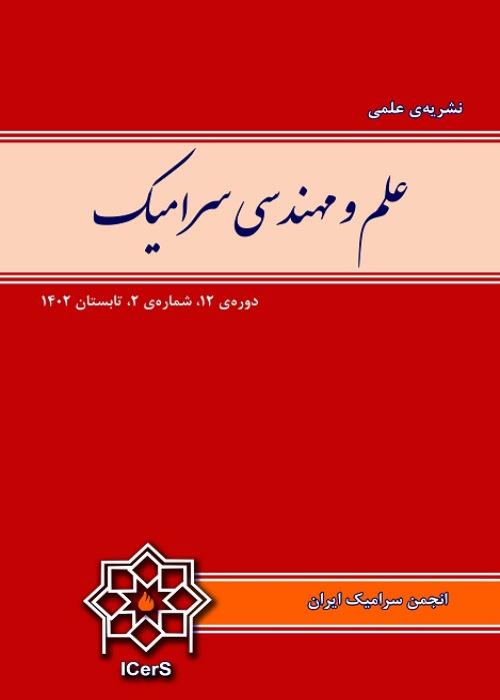Archaeometry Studies of the Bronze Age Pottery and Ceramics of Tepe Silveh Piranshahr, NW IRAN
Abstract:
Archaeological rescue project of the Silveh Dam was carried out by Iranian Center for Archaeological Research (ICAR) (952141/00/3937 – 1395/12/23) permission during about four monthschr('39') field activities. Tepe Silveh or as villager named Tepe Sheikh Esmail Silveh (N: 36° 48chr('39') 099chr('39')chr('39') – E: 45° 05chr('39') 937chr('39')chr('39') – 1567m asl) is located exactly 100 m north of the Silveh village. Tepe Silveh is located in the center of intermountain river valley on the northern margin of the village, which has already been demolished and abandoned. Main important assemblage of findings belong to painted buff and orange and as well as few grey/black pottery that introduced and reported by Tepe Silveh and Tepe Hasanlu and some other surveyed sites. No Archaeometrical and chemical-mineralogical characterization have been done yet on pottery assemplages.
Hence, 51 pottery specimens was sampled from different period and layers of the Tepe Silveh belong to Late Chalcolithic to Early Bronze Age pottery tradition of black/gray burnished Kura-Araxes culture and as well as painted buff and red pottery traditions of Early Bronze Age of Hasanlu VII (Hasan Ali Ware) and Ninevi 5 to address such issues as its geological source, manufacturing techniques, firing and kiln conditions, local or foreign provenience, determination of sharing and segregation between different groups of pottery. To determine the crystalline constituents, different mineralo-chemical investigations were undertaken. The major phase compositions of the pottery assemblages were determined using X-ray diffraction (XRD), and for thermography DTA were used. Also, the thin-section of the pottery was analyzed by optical microscopy techniques so as to petrographic identification of the minerals. The result of phase identification and petrographic analysis showed that the studied pottery is similar in terms of composition and mineralogy but are completely different in terms of morphology, baking technique and color as well as kiln conditions. According to the similarity of the main structural combination and characterization of black – gray pottery assemblage with the geological structure of the region it should be suggested that this type of pottery produced locally in the Piranshahr or close adjacent region that is not very far from the site that in terms of geological structure and charectrization have similar compounds with Tepe Silveh Pottery. Also, due to the complete match of thermal analysis with the results of petrography and X-ray diffraction analysis, the baking and firing temperature in all samples can be estimated at 850 °.
Hence, 51 pottery specimens was sampled from different period and layers of the Tepe Silveh belong to Late Chalcolithic to Early Bronze Age pottery tradition of black/gray burnished Kura-Araxes culture and as well as painted buff and red pottery traditions of Early Bronze Age of Hasanlu VII (Hasan Ali Ware) and Ninevi 5 to address such issues as its geological source, manufacturing techniques, firing and kiln conditions, local or foreign provenience, determination of sharing and segregation between different groups of pottery. To determine the crystalline constituents, different mineralo-chemical investigations were undertaken. The major phase compositions of the pottery assemblages were determined using X-ray diffraction (XRD), and for thermography DTA were used. Also, the thin-section of the pottery was analyzed by optical microscopy techniques so as to petrographic identification of the minerals. The result of phase identification and petrographic analysis showed that the studied pottery is similar in terms of composition and mineralogy but are completely different in terms of morphology, baking technique and color as well as kiln conditions. According to the similarity of the main structural combination and characterization of black – gray pottery assemblage with the geological structure of the region it should be suggested that this type of pottery produced locally in the Piranshahr or close adjacent region that is not very far from the site that in terms of geological structure and charectrization have similar compounds with Tepe Silveh Pottery. Also, due to the complete match of thermal analysis with the results of petrography and X-ray diffraction analysis, the baking and firing temperature in all samples can be estimated at 850 °.
Keywords:
Tepe Silveh , Hasanlu VII , Hasan Ali Ware , Kura- Araxes , Pottery , Charectrization , XRD , Petrography , DTA
Language:
Persian
Published:
Iranian Journal of Ceramic Science & Engineering, Volume:9 Issue: 2, 2020
Pages:
99 to 120
magiran.com/p2170612
دانلود و مطالعه متن این مقاله با یکی از روشهای زیر امکان پذیر است:
اشتراک شخصی
با عضویت و پرداخت آنلاین حق اشتراک یکساله به مبلغ 1,390,000ريال میتوانید 70 عنوان مطلب دانلود کنید!
اشتراک سازمانی
به کتابخانه دانشگاه یا محل کار خود پیشنهاد کنید تا اشتراک سازمانی این پایگاه را برای دسترسی نامحدود همه کاربران به متن مطالب تهیه نمایند!
توجه!
- حق عضویت دریافتی صرف حمایت از نشریات عضو و نگهداری، تکمیل و توسعه مگیران میشود.
- پرداخت حق اشتراک و دانلود مقالات اجازه بازنشر آن در سایر رسانههای چاپی و دیجیتال را به کاربر نمیدهد.
In order to view content subscription is required
Personal subscription
Subscribe magiran.com for 70 € euros via PayPal and download 70 articles during a year.
Organization subscription
Please contact us to subscribe your university or library for unlimited access!


